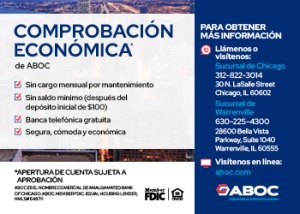By: Daniel Nardini
Puerto Rican Governor Luis Fortuno had declared a five day mourning period for Ricardo Alegria. Ricardo Alegria was not only Puerto Rico’s leading expert on Taino culture but also the leading figure who has helped to preserve so much of Puerto Rico’s historical and architectural past—especially the area known as Old San Juan. Few other persons has had as great an impact on the island in its recent history as Ricardo Alegria.
Born in Old San Juan on April 14, 1921, Alegria grew up in Old San Juan. The grand historic area helped to shape his pride in his ancestral heritage, and this he would carry for the rest of his life. He attended and graduated from the University of Puerto Rico before attending and graduating with a masters in anthropology and history at the University of Chicago and a doctorate in anthropology from Harvard University. In 1955, just one year after the founding of the Commonwealth of Puerto Rico, Alegria became the executive director of the Institute of Puerto Rican Studies. Through the institute, he helped to advance the study of the culture of the native Tainos—the people who were the native inhabitants of Puerto Rico before the coming of the Spanish.
When Alegria returned to Puerto Rico from Harvard, he set about urging the local and commonwealth governments to preserve and protect the historic areas from the wrecking ball. During the 1950’s and 1960’s all of Puerto Rico’s major cities, and especially San Juan, developed new districts with modern housing and modern buildings as a sign of the island’s growing wealth and prosperity. Alegria was obviously never against modern development, but he did all he could to promote and preserve the historic parts of the island for future generations. This not only included the Spanish buildings and churches but also the prehistoric sites that still dot the island today.
In 1976, Alegria founded the Graduate Center for the Advanced Studies on Puerto Rico and the Caribbean—an institution that has helped to promote the study and preservation of Puerto Rico’s architectural heritage. This way Alegria has helped to create a new generation of Puerto Ricans who will work towards trying to save Puerto Rico’s rich historical and architectural past. In 1982, Alegria founded the Museum of the Americas, and in 1993, the United Nations Educational, Scientific and Cultural Organization awarded Alegria its Picasso Award for his outstanding work.
One of his greatest contributions has been his hypothesis that the Tainos did not entirely die out but survived the Spanish conquest and merged with the Spanish conquistadors and the African slave population to become the present day Puerto Rican people. DNA testing has proven that one-third of all Puerto Ricans (two out of six million) have Taino genetics. Alegria has not only helped to preserve the rich heritage of the Puerto Rican people but has also helped in a way to shape it by providing Puerto Ricans with knowledge and insight into their ancestral heritage. Ricardo Alegria passed away at age 90.











In Honor of Ricardo Alegria
By: Daniel Nardini
Puerto Rican Governor Luis Fortuno had declared a five day mourning period for Ricardo Alegria. Ricardo Alegria was not only Puerto Rico’s leading expert on Taino culture but also the leading figure who has helped to preserve so much of Puerto Rico’s historical and architectural past—especially the area known as Old San Juan. Few other persons has had as great an impact on the island in its recent history as Ricardo Alegria.
Born in Old San Juan on April 14, 1921, Alegria grew up in Old San Juan. The grand historic area helped to shape his pride in his ancestral heritage, and this he would carry for the rest of his life. He attended and graduated from the University of Puerto Rico before attending and graduating with a masters in anthropology and history at the University of Chicago and a doctorate in anthropology from Harvard University. In 1955, just one year after the founding of the Commonwealth of Puerto Rico, Alegria became the executive director of the Institute of Puerto Rican Studies. Through the institute, he helped to advance the study of the culture of the native Tainos—the people who were the native inhabitants of Puerto Rico before the coming of the Spanish.
When Alegria returned to Puerto Rico from Harvard, he set about urging the local and commonwealth governments to preserve and protect the historic areas from the wrecking ball. During the 1950’s and 1960’s all of Puerto Rico’s major cities, and especially San Juan, developed new districts with modern housing and modern buildings as a sign of the island’s growing wealth and prosperity. Alegria was obviously never against modern development, but he did all he could to promote and preserve the historic parts of the island for future generations. This not only included the Spanish buildings and churches but also the prehistoric sites that still dot the island today.
In 1976, Alegria founded the Graduate Center for the Advanced Studies on Puerto Rico and the Caribbean—an institution that has helped to promote the study and preservation of Puerto Rico’s architectural heritage. This way Alegria has helped to create a new generation of Puerto Ricans who will work towards trying to save Puerto Rico’s rich historical and architectural past. In 1982, Alegria founded the Museum of the Americas, and in 1993, the United Nations Educational, Scientific and Cultural Organization awarded Alegria its Picasso Award for his outstanding work.
One of his greatest contributions has been his hypothesis that the Tainos did not entirely die out but survived the Spanish conquest and merged with the Spanish conquistadors and the African slave population to become the present day Puerto Rican people. DNA testing has proven that one-third of all Puerto Ricans (two out of six million) have Taino genetics. Alegria has not only helped to preserve the rich heritage of the Puerto Rican people but has also helped in a way to shape it by providing Puerto Ricans with knowledge and insight into their ancestral heritage. Ricardo Alegria passed away at age 90.